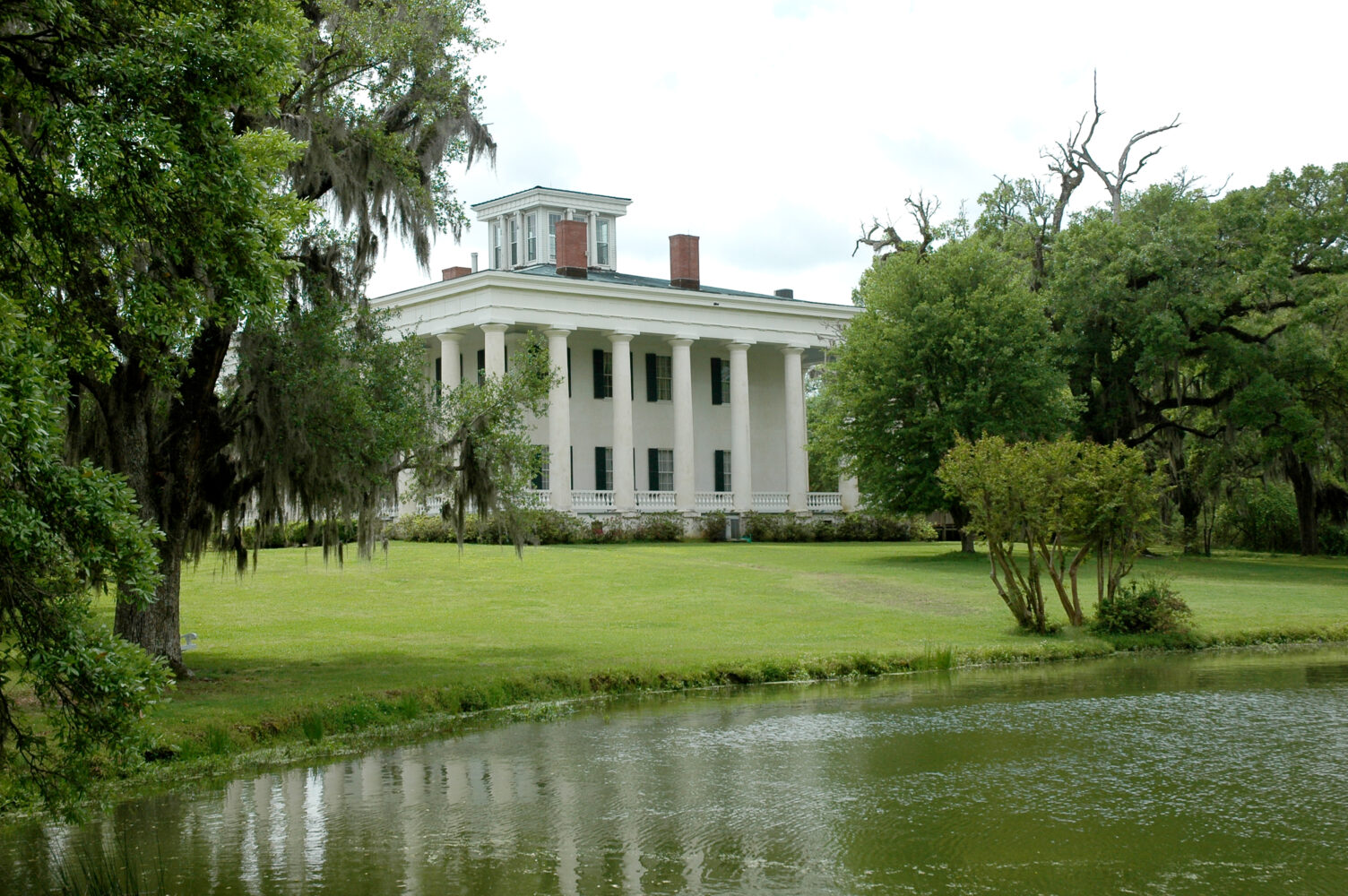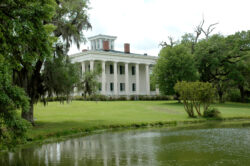Greenwood Plantation
The massive Greek Revival plantation house is a modern replica of the original structure at Greenwood which burned to the ground in 1960.

Photo by Michael McCarthy.
Greenwood Plantation in 2009.
Greenwood Plantation, a massive Greek Revival house in St. Francisville, is a modern replica of the original building. Struck by lightning in 1960, the house burned to the ground, leaving only the twenty-eight brick columns of its gallery and four chimneys. No plans of the house existed, so the owners, Walter Barnes and his son Richard, based its reconstruction on the surviving foundations, photographs, an inventory of furnishings, and oral descriptions. Almost one hundred feet square, the rebuilt house is surrounded by two-story-tall Doric columns; it has a seventy-foot-long central hall and a third-floor attic surmounted by a rooftop belvedere. It is believed that builder James H. Coulter, who came to West Feliciana in the 1820s from Delaware, supervised construction of the original house, using African American carpenters and contemporary pattern books.
The original house was built for William Ruffin Barrow and his wife, Olivia Ruffin Barrow (who was his first cousin and a sister of Martha Turnbull of Rosedown Plantation). Like other plantation-owning members of the Barrow family, William Barrow amassed an enormous fortune. In 1840 the Barrows owned 275 slaves on this twelve-thousand-acre sugarcane plantation.
During Reconstruction and the decades that followed, Greenwood largely fell into ruin until the plantation was purchased by Mr. and Mrs. Frank Percy in 1915. The Percys worked Greenwood as a family farm and opened the home to tourists. The Barnes purchased the property in 1968 when nothing stood but the charred columns following the devastating fire. Soon after the replicated mansion was complete in 1984, a French-Canadian filmmaker contracted to use Greenwood for the movie Louisiana. During the filming of this movie, the filmmaker completed the landscaping and decorating of the home. Greenwood Plantation has been the site for five subsequent movies: Drango (1957), Louisiana, (1984), North and South – Book I (1985), North and South – Book II (1986), and Sister, Sister (1987).
Greenwood is similar in size and design to nearby Ellerslie Plantation House. Ellerslie was built in 1832, perhaps by James H. Coulter, for Judge William C. Wade from North Carolina and Olivia Ruffin Wade; reputedly, it was mostly her money that financed construction. Neither Greenwood nor Ellerslie are imaginative designs, but their sheer size makes them impressive. They are prime examples of the commitment to the Greek Revival style for plantation houses in Louisiana during the 1830s and 1840s because it represented power, wealth, and cultured taste rather than because of its associations with the Greek ideals of democracy. Greenwood is open for tours and offers bedand-breakfast accommodations.
Adapted from Karen Kingsley’s Buildings of Louisiana, part of the Buildings of the United States series commissioned by the Society of Architectural Historians (www.sah.org) and published by Oxford University Press.
